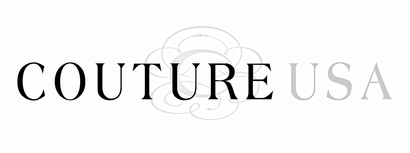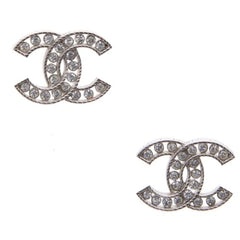Your Bag is Empty
Menu

The Artistry Behind the Logos
September 26, 2019 5 min read

A strong logo behind a company's branding has the power to convey the business vision. It takes less than five seconds to grab a consumer's attention with your logo, it needs to be interesting enough to grab attention but also simple enough to not be too involved. While making that great first impression, containing the power to be iconic, and defining the brand image is important for the legacy of a brand. Logos hold a heavy amount of power in any business and can forever change their success and popularity. Imagine the work that went into creating the iconic logos for the powerhouse brands in luxury fashion such as Chanel, Gucci, Hermes, Louis Vuitton, and so much more. These brands have become household names in our society and it is no secret that they are easily recognizable. We're going to take a look at some of these iconic logos, the history behind them, and their impact on the brand.
Hermes

Although the logo was not introduced until the 1950s, Hermeshas been established since 1837. As the logo features, this brand primarily focused on producing the bridles and harnesses needed for carriages that carried the noblemen of the time. Today, Hermes has expanded its product line to handbags, jewelry, and more.
To fully dissect the artistry of the Hermes logo, one must remember their past. Because of their hand in creating the accessories for carriages, their logo features a Duc carriage drawn by a horse. In addition, the logo can be seen in a recognizable "Hermes Orange" hue. This color has symbolically become a signature for the brand ever since it was introduced after WWII. Due to supply shortages after the war, the brand needed to find alternatives to their original packaging so they turned to the orange box. This staple color has even won Hermes awards for their innovation.
Christian Louboutin

Arguably one of the most recognized brands, Christian Louboutin can be found referenced in multiple types of media. The iconic red lacquered sole of their shoes is a dead giveaway to the brand and the color red is defined by passion and love. After opening his first shop in 1992, Louboutin was working on a new design for a shoe and felt something was lacking when he suddenly found inspiration to take the black sole and make it red from an assistant painting her nails. He then took the nail polish and began painting the sole, paving the way for a legacy filled with red-tones. But with the iconic red sole, how about the logo itself?
The logo has undergone a few transformations since his start. The original logo was a plain black font but now stands out in white within a red circle. The "L" in Louboutin loops up to create the "C" in Christian and also resembles the high arch of his shoe designs. The first name also takes a twist, written in a roman font while his name continues in a handwritten style script. You can find this iconic logo stamped into those famous red-soles and printed on a variety of high-fashion products that are coveted by Louboutin fanatics everywhere.
Gucci

Widely known around the world as one of the top designer luxury brands, Gucci is celebrated amongst luxury enthusiasts including inspiring artists to name themselves after it. Founded in 1921, in Italy, Guccio Gucci made his start by selling luxury luggage crafted by in-house craftsmen. With the help of his sons, the Guccis were able to open up multiple shops after their popularity rose.
In 1933 Aldo Gucci, Gucci's son, designed the infamous interlocking GG design based upon his father's initials. The idea was to create a logo where the letters created a shape but could be later recognized as the "GG." This motif features two G's with one flipped horizontally, imitating the interlocking design. To take it a step further, Gucci would later include the full name written above or below the letters in order for the brand to continue to be recognized. The full named logo features a font with varying thick and thin curving lines with little feet at the ends.
Louis Vuitton

Louis Vuitton is arguably one of the most recognized luxury brands in the world. From the iconic Monogram canvas to the Damier print, the logo is featured around the world on clothing, shoes, and their popular handbags.
The LV design was created by Louis Vuitton's son, Georges, after his father's passing in 1892. The logo was hand designed and features an L slightly to the left and underneath the V. Both letters are capitalized with an italicized sans serif font and this remains to be one of the most iconic and never changing logo styles. Before the Marc Jacobs takeover in 1997, it would feature the full name underneath the emblem, but now both elements are used for advertising purposes. Primarily written in black, now the logo can be seen in varying colors in order to appeal to the younger market as well.
Chanel

The House of Chanelhas one of the most recognizable and mysterious logos in the world. To this day, no one knows the true origin of the iconic interlocking CC's, but they have plenty of theories. The interlocking "CC" pays homage to Gabrielle Bonheur Chanel, or fondly known as Coco Chanel. Founder of the house designed the logo in 1925, about 15 years after she started her line, and is now widely recognized as one of the most influential fashion designers of all time.
The story behind the iconic logo is spotty despite its popularity. Chanel never revealed the true origins and ideas behind the design, and since there are no known facts, plenty of theories arose. Some of these theories include:
-
Château de Crémat: Owned by a friend, it is said that Chanel herself spent most of her time there. Within the estate are stain glass windows that have interlocking CCs within the designs that may have influenced her to incorporate these into her design.
-
Aubazine Chapel: Chanel spent most of her time in the chapel as a child growing up in the orphanage. A similar theory to the Chateau, the abstract interlaced patterns are credited as a possible influence of her design choices.
-
Arthur "Boy" Capel: One of the most popular theories is that Chanel modeled the logo after the love of her life. It is no secret that many of her designs were influenced by her lover, including the infamous Boy bag, because she considered him her muse.
Are there any other designer logos you would like to know about? Let us know in the comments below!
Recent Articles
- All you need to know about Chanel Flap bags November 03, 2023
- Should we say Saint Laurent or Yves Saint Laurent? May 22, 2023
- Top Summer Travel Essentials July 14, 2022
- Gift Ideas Your Mom will Love April 29, 2022
- Walk a Mile in the Latest Shoe Trends April 20, 2022
Couture VIP
Sign up now for exclusive pre-sale alert before anyone else!
+30 OFF your first purchase of $300 or more
Cookie Policy
By continuing on this website, you consent to the use of cookies by CoutureUSA and our partners. Our goal is to offer you a more enjoyable shopping experience with personalized content and advertising. For more information, please read our Privacy Policy.
OK More Info

Welcome Back!
YOU HAVE THE FOLLOWING ITEMS WAITING IN YOUR CART!
BUY NOW BEFORE IT'S TOO LATE!
VIEW CART







































































































